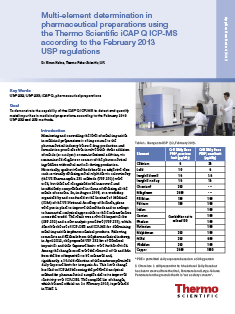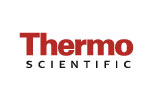Knowledge Base

View8
- IRMS
- Delta V
- Stable Isotopes
- Essential Oils
- View
- Add to Favorites
- Send Link
- Private
Evaluation of Gas Chromatography−Combustion−Isotope RatioMass Spectrometry (GC-C-IRMS) for the Quality Assessment of Citrus Liqueurs
Luisa Schipilliti (1), Ivana Bonaccorsi 1), Antonella Cotroneo (1), Paola Dugo (1,2 and Luigi Mondello (1,2)
1) Diaprtimento di Scienze del Farmaco e dei Prodotti per la Salute, Università di Messina, Viale Annunziata, 98168 Messina, Italy, 2) Campus-Biomedico, Via A. del Portillo 21, 00128 Roma, Italy
Journal of Agricultural and Food Chemistry (2013), V61 (8), pp1661–1670, doi: 10.1021/jf3028073
Goal: The aim of this study is to investigate the authenticity of Italian liqueurs, of lemon, bergamot, and mandarin (locally known as “limoncello”, “bargamino”, and “mandarinetto”), comparing the carbon isotope ratios with values determined in genuine cold-pressed peel oils.

View3
- IRMS
- Delta V
- Stable Isotopes
- Essential Oils
- View
- Add to Favorites
- Send Link
- Private
Genuineness assessment of mandarin essential oils employing gas chromatography-combustion-isotope ratio MS (GC-C-IRMS)
Luisa Schipilliti (1), Peter Quinto Tranchida (1), Danilo Sciarrone (1), Marina Russo (1), Paola Dugo (1), Giovanni Dugo (1), Luigi Mondello (1,2)
1) Dipartimento Farmaco-chimico, Facoltà di Farmacia, Università di Messina, Messina, Italy, 2) Campus Biomedico, Roma, Italy
Goal: Reconstituted mandarin oils are easy to find on the market; useful information on essential oil authenticity, quality, extraction technique, geographic origin and biogenesis can be attained through high-resolution GC of the volatile fraction, or enantioselective GC, using different chiral stationary phases.

View3
- IRMS
- Delta XL
- TC/EA
- Hydrogen Isotopes
- Essential Oils
- View
- Add to Favorites
- Send Link
- Private
Authenticity assessment of lavender oils using GC-P-IRMS: 2H/1H isotope ratios of linalool and linalyl acetate
Steffi Bilke and Armin Mosandl
Institut für Lebensmittelchemie, Biozentrum J.W. Goethe-Universität, Frankfurt/Main, Germany
European Food Research and Technology (2002), V214 (6), pp532–535, doi: 10.1007/s00217-002-0508-z
Goal: Gas chromatography-pyrolysis-isotope mass spectrometry (GC-P-IRMS) is applied to the authenticity assessment of lavender oils.

View3
- IRMS
- 253 Plus
- LIDI Software
- Clumped Isotopes
- View
- Add to Favorites
- Send Link
- Private
Carbonate clumped isotope analyses with the long-integration dual-inlet (LIDI) workflow: scratching at the lower sample weight boundaries
Inigo A. Müller (1), Alvaro Fernandez (1), Jens Radke (2), Joep van Dijk (1), Devon Bowen (3), Johannes Schwieters (2) and Stefano M. Bernasconi (1)
1) Geological Institute, ETH Zürich, Switzerland, 2) Thermo Fisher Scientific, Bremen, Germany, 3) Ziggurat GmbH, Stäfa, Switzerland
Rapid Communications in Mass Spectrometry (2017) , V31 (12), pp1057–1066, doi: 10.1002/rcm.7878
Goal: Clumped isotope analyses (Δ47) of carbonates by dual inlet (DI) mass spectrometry require long integration times to reach the necessary high precision due to the low abundance of the rare isotopologue 13C18O16O. We tested an improved analytical workflow that significantly reduces the sample sizes and total analysis time per sample while preserving precision and accuracy.

View12
- MC-ICPMS
- Neptune Plus
- Mo, Pt isotopes
- Jupiter
- View
- Add to Favorites
- Send Link
- Private
Age of Jupiter inferred from the distinct genetics and formation times of meteorites
Thomas S. Kruijer (1, 2), Christoph Burkhardt (1), Gerrit Budde (1) and Thorsten Kleine (1)
1) Institut für Planetologie, University of Münster, Germany, 2) Nuclear and Chemical Sciences Division, Lawrence Livermore National Laboratory, Livermore, USA
Proceedings of the National Academy of Science of the United States of America (2017), V114 (26), pp6712–6716, doi: 10.1073/pnas.1704461114
Goal: Here, using molybdenum and tungsten isotope measurements on iron meteorites, we demonstrate that meteorites derive from two genetically distinct nebular reservoirs that coexisted and remained spatially separated between ∼1 My and ∼3–4 My after Solar System formation.

View2
- TIMS
- Triton Plus
- Ca Isotopes
- View
- Add to Favorites
- Send Link
- Private
Advances in high precision Ca isotope ratio measurements using TIMS
Claudia Bouman, Dietmar Tuttas, Michael Deerberg and Johannes Schwieters
Thermo Fisher Scientific, Bremen, Germany
Goal: Here we present different measurement strategies for Ca isotope analysis. We discuss pros and cons and examine the ability to measure all Ca isotopes simultaneously (40Ca up to 48Ca) on the TRITON Plus mass spectrometer.

View2
- MC-ICP-MS
- Neptune Plus
- Nd
- ESI microFAST MC apex Ω
- small samples
- View
- Add to Favorites
- Send Link
- Private
High-throughput High-precision Nd Isotope Ratios from Small Samples Using Syringe Based Flow Injection for MC-ICP-MS
Nicholas S. Lloyd (1), Paul Watson (2) and M. Paul Field (2)
1) Thermo Fisher Scientific, Bremen, Germany, 2) Elemental Scientific Inc., Omaha, Nebraska, USA
Poster Note 30358
Goal: This poster note evaluate the combination of the Neptune Plus MC-ICPMS with Elemental Scientific microFAST MC apex Ω sample introduction system for rapid determination of 143Nd/144Nd from small Nd sample amounts.

View8
- IRMS
- 253 Plus
- LIDI Software
- Clumped Isotopes
- CO2
- Calcite
- View
- Add to Favorites
- Send Link
- Private
253 Plus 10kV IRMS - New 10kV Isotope Ratio Mass Spectrometer: Robust Precision and Accuracy for Low Abundance Isotope research
J. Radke (1), A. Behrens (2), S.M. Bernasconi (2), A. Fernandez (2), I.A. Müller (2), A. Hilkert (1) and J. Schwieters (1)
1) Thermo Fisher Scientific, Bremen, Germany, 2) ETH Zürich, Switzerland
Poster Note 30360
Goal: This poster note describes the use of the 253 Plus 10 kV IRMS technology in combination with the 1013 ohm amplifier technology and LIDI software control to evaluate the one degree Celsius boundary, e.g. clumped CO2 isotope research.

View6
- Relative Abundances of Isotopes
- MC-ICPMS
- Neptune Plus
- TIMS
- Triton Plus
- HR-ICPMS
- Element 2
- Element XR
- View
- Add to Favorites
- Send Link
- Private
Cup Configurations and Relative Abundances of Isotopes
Thermo Fisher Scientific, Bremen, Germany
PN1991130

View3
- Laser Ablation
- ICPMS
- Triple LASS
- U-Pb
- Hf
- REE
- View
- Add to Favorites
- Send Link
- Private
Laser Ablation Split Stream (LASS) Between Three Inductively Coupled Plasma Mass Spectrometers for Zircon Petrochronology
G. Craig (1), D. A. Frick (2), C. Bouman (1), N. Lloyd (1) and J. B. Schwieters (1)
1) Thermo Fisher Scientific, Bremen, Germany, 2) Helmholtz Centre Potsdam, GFZ German Research Centre for Geosciences, Potsdam, Germany
Goal: This poster describes how LASS was achieved using disposable membrane pumps. Hf, U-Pb and rare earth element (REE) data were measured simultaneously by multicollector (MC), sector field (SF), and quadrupole (Q) ICP-MS respectively.

View0
- MC-ICPMS
- Neptune Plus
- Isotope ratios
- Osmium
- Multiple Ion Counting
- View
- Add to Favorites
- Send Link
- Private
Low level Os isotopic measurements using multiple ion counting
Jean Louis Birck (1), Delphine Limmois (1), Lionnel Mounier (1), Nicholas Lloyd (2) and Johannes B. Schwieters (2)
1) Institut de Physique du Globe de Paris, Sorbonne Paris Cité, France, 2) Thermo Fisher Scientific, Germany
AN30355
Goal: The purpose of this note is to extend the low level Os isotopic measurements to multicollector ICP-MS instrumentation.

View0
- HR-ICPMS
- Element XR
- Gas Chromatography
- GCI200
- Speciation
- Tin
- View
- Add to Favorites
- Send Link
- Private
High sensitivity tin speciation using a new GC interface with Sector Field High Resolution ICP-MS
Torsten Lindemann, Antonella Guzzonato and Shona McSheehy Ducos
Thermo Fisher Scientific, Bremen, Germany
Poster 43431
Goal: This poster evaluates the performance of a new interface between Sector Field Inductively Coupled Plasma Mass Spectrometry (SF ICP-MS) and Gas Chromatography (GC) for tin speciation.

View0
- MC-ICP-MS
- Neptune Plus
- Gas Chromatography
- GCI300
- Speciation
- Sulfur
- Isotope Ratios
- Crude Oil
- View
- Add to Favorites
- Send Link
- Private
Application of a new interface to the δ34S speciation analysis of volatile organic compounds in crude oil by GC-MC-ICP-MS
Grant Craig, Antonella Guzzonato, Christopher Brodie, Shona McSheehy-Ducos and Claudia Bouman
Thermo Fisher Scientific, Bremen, Germany
Poster 30401
Goal: The performance of a new GC-MC-ICP-MS coupling interface, the GCI 300 Interface, between the Trace 1310 GC and Neptune Plus MC-ICP-MS has been demonstrated by δ34S speciation analysis of four crude oil samples.

View1
- MC-ICP-MS
- Neptune Plus
- Gas Chromatography
- GCI300
- Speciation
- Sulfur
- Isotope Ratios
- Crude Oil
- View
- Add to Favorites
- Send Link
- Private
Speciation and δ34S analysis of volatile organic compounds in crude oil by GC-MC-ICP-MS using the Thermo Scientific GCI 300 Interface
Grant Craig, Antonella Guzzonato, Christopher Brodie, Shona McSheehy Ducos and Claudia Bouman
Thermo Fisher Scientific, Bremen, Germany
TN30383
Goal: This note demonstrates the utility of the Neptune Plus Multicollector ICP-MS, when coupled with the Trace 1310 GC via the GCI300 Interface, for isotopic sulfur analysis of individual compounds within a series of crude oil samples.

View4
- IRMS
- MAT 252
- Dual Inlet
- Ar isotopes
- Ice
- View
- Add to Favorites
- Send Link
- Private
A method for precise measurement of argon 40/36 and krypton/argon ratios in trapped air in polar ice with applications to past firn thickness and abrupt climate change in Greenland and at Siple Dome, Antarctica
Jeffrey P. Severinghaus1 (1), Alexi Grachev (1), Boaz Luz (2) and Nicolas Caillon (3)
1) Scripps Institution of Oceanography, University of California San Diego, La Jolla, CA 92093, USA, 2) The Institute of Earth Sciences, The Hebrew University of Jerusalem, Jerusalem 91904, Israel, 3) IPSL Laboratoire des Sciences du Climat et de l’Environnement, UMR CEA-CNRS 1572, CEA Saclay, 91191 Gif-sur-Yvette, France
Geochimica et Cosmochimica Acta (2003), V67 (3), pp. 325–343, doi: 10.1016/S0016-7037(02)00965-1
Goal: We describe a method for measuring the 40Ar/36Ar ratio and the 84Kr/36Ar ratio in air from bubbles trapped in ice cores. These ratios can provide constraints on the past thickness of the firn layer at the ice core site and on the magnitude of past rapid temperature variations when combined with measured 15N/14N. Both variables contribute to paleoclimatic studies and ultimately to the understanding of the controls on Earth’s climate.

